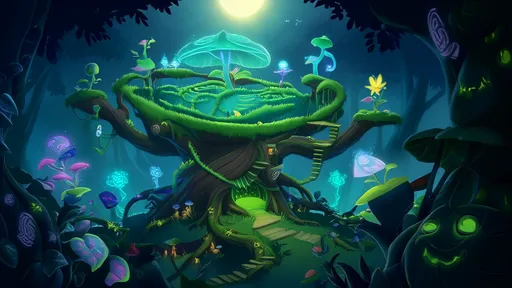Deep in the heart of ancient forests, a silent conversation has been unfolding for millennia—one that humans are only beginning to understand. The idea that trees communicate with one another once seemed like the stuff of fantasy, but groundbreaking research has revealed an intricate web of connections beneath our feet. This subterranean network, often dubbed the "Wood Wide Web," allows plants to exchange nutrients, send distress signals, and even nurture their kin. Scientists are now developing innovative ways to decode this hidden language, turning what was once ecological speculation into a fascinating field of study.
The concept of plant communication challenges our traditional understanding of the natural world. For centuries, plants were viewed as passive organisms, simply responding to environmental stimuli without any form of agency. However, the discovery of mycorrhizal networks—symbiotic relationships between fungi and plant roots—has upended this notion. These fungal threads act as biological highways, transmitting chemical and electrical signals between trees. A dying tree might release its nutrients to neighboring saplings, while a pest-infested plant can warn others to bolster their defenses. This cooperative behavior suggests a level of intelligence and social interaction that parallels animal communities.
One of the most compelling aspects of this research is how it redefines our perception of forests. Rather than a collection of individual trees competing for resources, a forest operates more like a superorganism. Older "mother trees" serve as hubs, distributing resources and information to younger plants. This interconnectedness ensures the survival of the community, even at the expense of individual specimens. The implications are profound: clear-cutting or removing key trees doesn’t just eliminate single organisms—it disrupts an entire communication network, potentially weakening the forest’s resilience.
Recent advancements in technology have allowed researchers to "listen in" on these botanical exchanges. Sensitive instruments can detect the faint electrical pulses that travel through root systems, while isotopic tracing reveals the movement of carbon and other elements between plants. Some scientists have even experimented with translating these signals into audible sounds, creating eerie, otherworldly symphonies that hint at the complexity of plant interactions. These methods are not just academic curiosities—they could revolutionize agriculture, forestry, and conservation efforts by helping us understand how to foster healthier ecosystems.
The study of plant communication also raises philosophical questions about consciousness and intelligence. If trees can warn each other of danger, share resources, and recognize kin, does that mean they possess a form of cognition? While plants lack brains and nervous systems, their ability to process information and adapt to changing conditions suggests a different kind of intelligence—one that operates on a timescale far slower than our own. This challenges the anthropocentric view that intelligence must resemble human thought, opening the door to a more inclusive understanding of sentience in nature.
As the field grows, so does its potential applications. Farmers might one day use "plant chatter" to monitor crop health, detecting stress signals before visible signs of disease appear. Forest managers could prioritize the protection of mother trees to maintain robust mycorrhizal networks. Even urban planners might design green spaces that facilitate plant communication, creating more resilient city ecosystems. The more we learn about this hidden language, the more we realize how much remains undiscovered—beneath every step we take in the woods lies a world of conversation waiting to be heard.
Perhaps the most humbling lesson from this research is the reminder of how much we still don’t know about the natural world. The forest floor, once thought of as little more than dirt and decay, is alive with messages and meaning. Decoding this language doesn’t just satisfy scientific curiosity—it deepens our connection to the living planet and underscores the importance of preserving these intricate systems. In listening to the trees, we might finally learn how to better coexist with the silent, thriving networks that have sustained life long before humans walked the Earth.

By /Jul 3, 2025

By /Jul 3, 2025

By /Jul 3, 2025

By /Jul 3, 2025

By /Jul 3, 2025

By /Jul 3, 2025

By /Jul 3, 2025

By /Jul 3, 2025

By /Jul 3, 2025

By /Jul 3, 2025

By /Jul 3, 2025

By /Jul 3, 2025

By /Jul 3, 2025

By /Jul 3, 2025

By /Jul 3, 2025

By /Jul 3, 2025

By /Jul 3, 2025

By /Jul 3, 2025